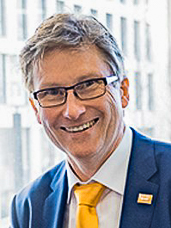Thought Leadership

A plea on the significance and change in the Chemical industry by Dr. Holger Bengs, Diploma Chemist and Entrepreneur. He is the Founder and Managing Director of BCNP Consultants, Initiator of the European Chemistry Partnering (ECP) to promote business exchange between investors and decision makers in and around Chemistry and the Chemical industries and Diplomatic Council Member since 2014.
Twenty years ago, in 1998, the Twelve Basic Principles of Green Chemistry first saw the light of day. The objectives: to avoid environmental pollution, to reduce and save energy consumption, and at the same time to minimize the potential for accidents in production. The canon of basic principles also includes the increased use of renewable raw materials, the requirement that it be possible to naturally degrade chemical substances after use and the avoidance of derivative materials during production; but for the increased use of catalysts in small amounts to carry out a single reaction many times, but do not result in large amounts of secondary waste substances; the avoidance of unnecessary intermediate steps in production is also part of the list of recommendations. The 12 principles of Green Chemistry are:
1. Prevent Waste
2. Atom Economy
3. Less Hazardous Synthesis
4. Design Benign Chemicals
5. Benign Solvents & Auxiliaries
6. Design for Energy Efficiency
7. Use of Renewable Feedstocks
8. Reduce Derivatives
9. Catalysis (vs. Stoichiometry)
10. Design for degradation
11. Real-Time Analysis for Pollution Prevention
12. Inherently Benign Chemistry for Accident Prevention
An analysis of these twelve pioneering principles shows that they also significantly promote and drive the achievement of the UN’s 17 Sustainable Development Goals(6) which include the fight against poverty and hunger, the development of sustainable cities in the face of predictions which suggest that 75% of the world’s population will be living in urban areas in a matter of decades, and the generation of clean energy, turning to responsible consumption, and sustaining industry, innovation, and infrastructure.
The European Union Circular Economy Action Plan addresses this timely and much needed trend and assumes a fundamental supporting role:(7) The plan and its actions cover the entire product lifecycle, from design to material sourcing, manufacturing and use and consumption to disposal and on to the market for secondary raw materials from the recycling of used products.
It supports ways and projects that lead away from the linear disposable economy towards a circular economy. In it, the raw materials contained in products are reprocessed for use in the production process at the end of the product’s life cycle. The Cradle-to-Cradle principle, describes – in addition to other concepts – such an expression of change: in this case, raw materials recovered after the use of a product are recycled into the nutrient cycle or fed back into the technical cycle.
According to calculations and estimates, we currently consume on average, resources equivalent to our entire planet earth one-point-six times every year worldwide. If we believe this plausibility check, we will need three point zero earths per year by 2050.(9) It is therefore good that in the light of finite resources a rethink is taking place.
The field of technology demonstrates the problem for us very quickly as soon as we think about the complex devices in our office and leisure communications: valuable metals such as Gold, Silver, Copper, Cobalt, Tin and Tungsten which are used in smartphones and tablet computers in various places and for various purposes and the so-called rare earth elements (earth metals), which are no less valuable, and come with such melodious names as Neodymium, Europium or Yttrium. And these will be irretrievably lost if we do not learn to reclaim them efficiently at the end of the useful life of an electronic device, or even better, to develop new technologies that do not require their use at all.
